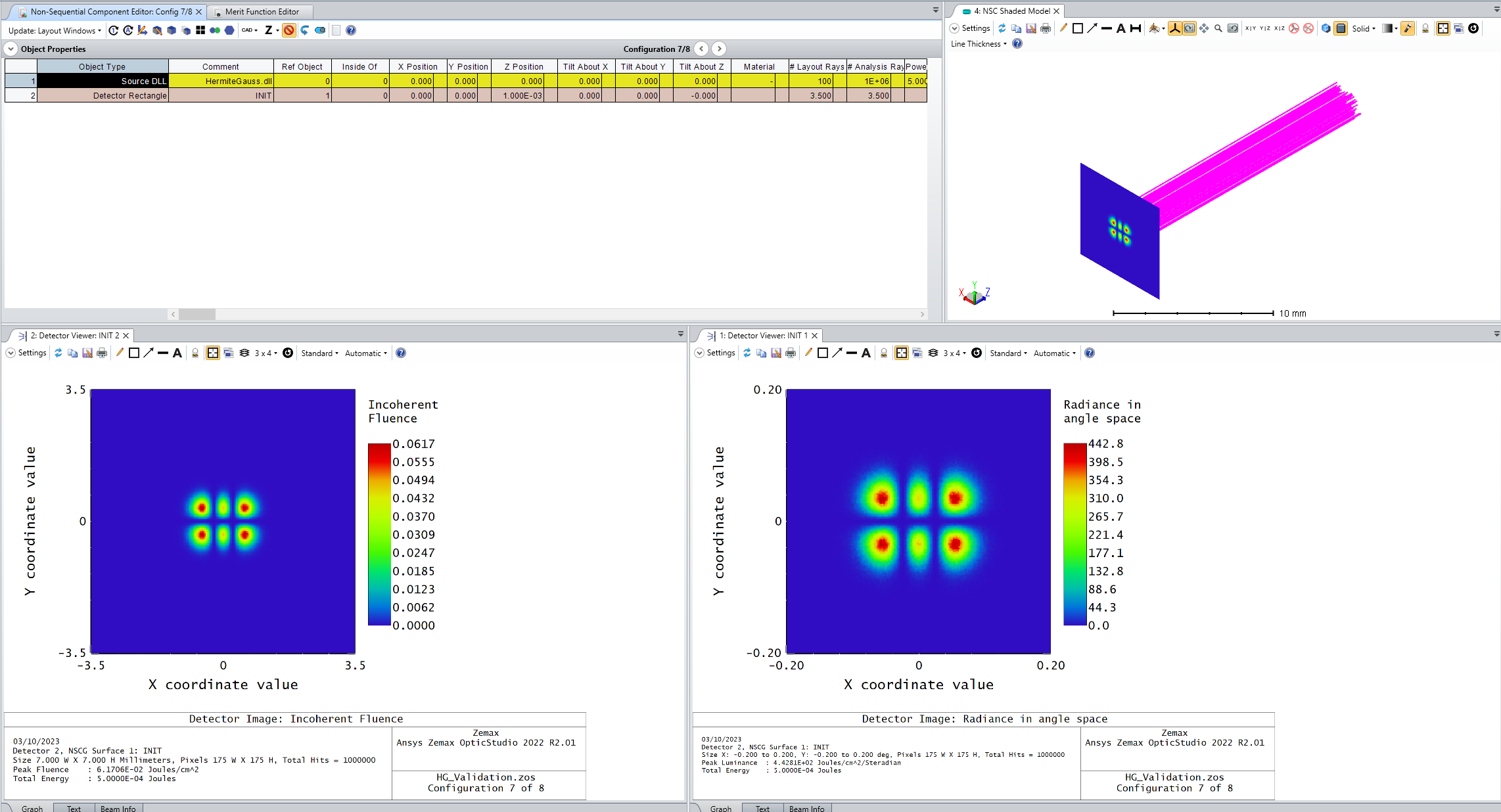
This Source DLL models an Hermite-Gaussian Source using ray generated at position and angles following the intensity of the electric field and the angular spectrum.
This Source DLL is inspired by the known DLL (Source): Non-sequential Astigmatic Gaussian
DLL (Source): Hermite-Gauss take 4 parameters:
- w0_x, w0_y are the theoretical beam waist of the fundamental mode
- n_x, m_y are the mode indices in the corresponding directions
Authors:
Oran Meir - TriEye
References:
1. Goodman, J. W. (1996, January 1). Introduction to Fourier Optics. McGraw-Hill Science, Engineering & Mathematics, Ch 3.10
2. Carter, W. H. (1980, April 1). Spot size and divergence for Hermite Gaussian beams of any order. Applied Optics, 19(7), 1027. https://doi.org/10.1364/ao.19.001027
3. Gaussian beam. (2023, September 3). Wikipedia. https://en.wikipedia.org/wiki/Gaussian_beam
4. Fourier transform. (2023, September 27). Wikipedia. https://en.wikipedia.org/wiki/Fourier_transform
5. DLL (Source): Non-sequential Astigmatic Gaussian | Zemax Community. (n.d.). https://community.zemax.com/code-exchange-10/dll-source-non-sequential-astigmatic-gaussian-1695
| Date | Version | OpticStudio Version | Comment |
|---|---|---|---|
| 02/10/2023 | 1.0 | 2022 R2.01 | Creation |



